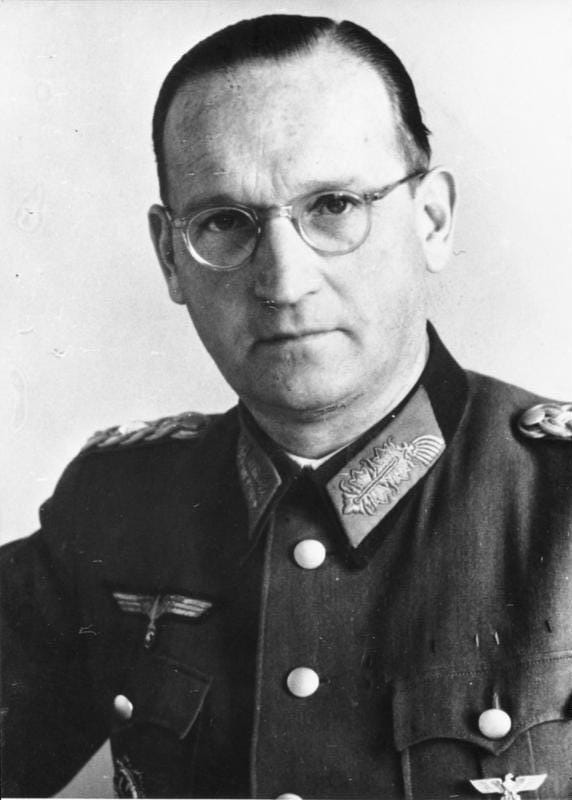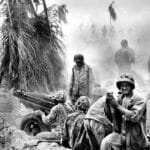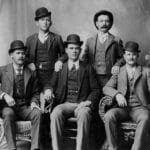Meet Hans Seagal Smidt, a German spy shrouded in mystery during World War II. Dive into his secret world of espionage and intrigue as we uncover the truth behind his enigmatic identity. Digging into the past, we’ll separate fact from fiction and unravel the enigma of this operative who played a pivotal role in one of history’s most epic conflicts.
Fact or Fiction: Unmasking “Hans Seagal Smidt”
It appears history may have played a trick on us! While the name “Hans Seagal Smidt” might sound like it belongs to a shadowy figure from WWII espionage, it’s not associated with any known German operatives from that era.
The search term, however, leads us to a captivating historical puzzle—one involving not one, but two German generals named Hans Schmidt. Both men played crucial roles in World War II, their stories offering glimpses into the real lives and challenging choices faced by individuals on history’s front lines.
Two Generals, One Name: Navigating the Hans Schmidt Enigma
General Hans Schmidt (1877-1948): Leading on the Eastern Front
The first General Hans Schmidt commanded the 24th Army, facing the brutal realities of the Eastern Front. Imagine the weight of directing troops through such intense conflict! Schmidt’s journey concluded with his army’s surrender in May 1945—a pivotal moment marking the war’s final chapter. His bravery under fire earned him the Knight’s Cross with Oak Leaves—a prestigious honor reserved for exceptional courage and leadership.
General Hans Schmidt (1895-1971): Defending Pegasus Bridge
Our second General Hans Schmidt found himself at the heart of D-Day, tasked with defending the strategically vital Pegasus Bridge against the Allied invasion. Picture the tension, the deafening clash as Allied paratroopers descended from the sky! Despite Schmidt’s valiant defense, the Allies ultimately secured the bridge—a turning point in the Normandy landings. His military career, however, continued: he went on to command the 68th and 275th Infantry Divisions, also receiving the Knight’s Cross.
These two men, sharing a name but forging distinct paths through the chaos of war, embody history’s complexities. Their stories remind us that within the vast scale of global conflict, individual experiences and moral dilemmas unfolded—leaving legacies that continue to intrigue us today.
Unveiling Hidden Histories: Finding a German Soldier from WWII
Embarking on a quest to uncover the story of a German soldier from World War II is a deeply meaningful endeavor. Whether driven by a personal connection or pure historical fascination, the journey promises to be as rewarding as it is challenging. Here’s how to get started:
Begin with Family Lore
Family often holds the first clues to unlocking the past. Begin by speaking with relatives—what stories, letters, or documents do they recall mentioning the soldier? Even seemingly insignificant details like their name, birthplace, or military unit can provide valuable leads.
Harness the Power of Online Resources
The digital age has made historical research more accessible than ever before. Websites like FamilySearch [https://www.lolaapp.com/] and MyHeritage [https://www.lolaapp.com/] are treasure troves of genealogical records. The Volksbund War Graves website [https://www.lolaapp.com/] is an invaluable resource dedicated to documenting the final resting places of German soldiers.
Navigating German Archives: A Vital Resource
For more in-depth research, the German Federal Archives (Bundesarchiv) is an invaluable resource—but it’s essential to understand its structure.
- Not a Central Repository: The Bundesarchiv is not a central archive for personal documents.
- Start Locally: Begin your research at local or state archives within Germany, as these often hold the most relevant documents for individual soldiers.
- Accessing Records: To access specific records from the Bundesarchiv, you’ll need to navigate their specific procedures, which may include submitting a “Benutzungsantrag” (application for use) and an “Order for Person-Related Research” form.
- Denazification Files: Records related to “denazification proceedings” are primarily held by state archives, not the Bundesarchiv.
The Archives portal D [https://www.lolaapp.com/] can help you locate the appropriate archive for your research.
Think Outside the (Digital) Box
Don’t underestimate the power of offline resources! Consider contacting the German Embassy or Consulate [https://www.lolaapp.com/] in your country. They can provide guidance or even connect you with relevant archives in Germany. Additionally, local historical societies and libraries in Germany often house unique records and personal accounts you won’t find anywhere else.
Overcoming Challenges
Like any good mystery, you might encounter obstacles along the way:
- Language Barriers: Familiarize yourself with translation tools or consider enlisting help from a German speaker.
- Lost or Damaged Records: Sadly, some records may have been lost or destroyed during the war.
- Privacy Restrictions: Access to certain documents might be limited due to privacy regulations.
Don’t be discouraged! Seeking assistance from experts like genealogists or historians can help you navigate these challenges effectively.
Beyond the Basics
Once you’ve identified the soldier, delve deeper into their story by exploring:
- Military Unit and Rank: Understanding their unit and rank can reveal their role within the larger military structure.
- Battles and Campaigns: Researching specific battles or campaigns they participated in can provide valuable context.
- Medals and Commendations: Did they receive any medals or commendations for bravery or service?
- Post-War Fate: If they survived the war, what became of them afterward?
Remember, historical research is an ongoing process. You may not uncover every detail, but every piece of information you gather brings you closer to honoring the memory of that soldier and their journey through one of history’s most significant conflicts.
Beyond Rommel: Unveiling the Lesser-Known Masterminds of the Blitzkrieg
When we think of famous German commanders in World War II, names like Erwin Rommel, the “Desert Fox,” often spring to mind. Yet, the complexities of Germany’s WWII leadership extended far beyond a single figure. The German military machine was driven by a cohort of strategic masterminds and controversial figures who shaped the war’s trajectory, both on land and at sea.
Karl Dönitz: The Architect of U-boat Warfare
At sea, Grand Admiral Karl Dönitz reigned supreme as the Commander-in-Chief of the Kriegsmarine (German Navy). A pioneer of U-boat warfare, Dönitz revolutionized naval combat with his “wolfpack” tactics, which proved devastatingly effective in the Battle of the Atlantic.
Dönitz’s legacy is complex. While a brilliant tactician, his use of unrestricted submarine warfare, targeting even merchant ships, remains ethically controversial. Additionally, his appointment as Hitler’s successor shortly before the Führer’s suicide places him at the heart of the Third Reich’s final days. Dönitz’s subsequent conviction for war crimes at Nuremberg, specifically for waging unrestricted submarine warfare, further complicates his place in history.
Heinz Guderian: Spearheading the Blitzkrieg
On land, General Heinz Guderian emerged as a leading proponent of Blitzkrieg—the lightning war doctrine that stunned the world in the early years of WWII. Guderian’s pivotal role in developing Panzer divisions and armored warfare tactics cannot be overstated. His leadership in successful campaigns in Poland, France, and the initial stages of Operation Barbarossa (the invasion of the Soviet Union) solidified his reputation as a military genius.
Erich von Manstein: A Master Strategist on the Eastern Front
Often hailed as one of Germany’s most brilliant strategic minds, Field Marshal Erich von Manstein orchestrated the stunningly successful invasion of France in 1940 (Fall Gelb). His tactical prowess was equally evident on the Eastern Front, where he achieved notable victories against the Red Army, despite ultimately being unable to stem the Soviet tide. His eventual dismissal by Hitler in 1944 for disagreements over strategy speaks volumes about the growing divide between Hitler’s intuition and the realities of the battlefield.
The Moral Dimension: Examining Leadership in the Shadow of the Third Reich
Studying these German commanders requires grappling with the uncomfortable truth that their military talents were often intertwined with their service to a criminal regime. This duality raises profound ethical questions:
- Were these commanders simply following orders, or were they complicit in the horrors perpetrated by the Nazi state?
- How much did their strategic brilliance contribute to the suffering inflicted upon millions?
- To what extent can we separate their military achievements from the moral abyss of the Nazi ideology?
Exploring these questions is essential for a nuanced understanding of their legacy.
From Battlefield to History Books: The German High Command
To fully grasp the context of these commanders’ actions, we must understand the structure and dynamics of the German High Command. Key institutions included:
- Oberkommando der Wehrmacht (OKW): The Armed Forces High Command, responsible for overall strategic direction of the war effort.
- Oberkommando des Heeres (OKH): The Army High Command, focused specifically on land warfare strategy and operations.
These organizations were not monolithic entities but rather collections of individuals with their own ambitions, rivalries, and moral compasses. Examining figures like Wilhelm Keitel, Chief of the OKW, and Alfred Jodl, Chief of Operations, provides further insight into the decision-making processes of the German war machine.
The SS and the Waffen-SS: A Complex Relationship
No discussion of the German military would be complete without addressing the complex relationship between the regular army (Wehrmacht) and the Schutzstaffel (SS)—specifically, the Waffen-SS, the armed wing of the Nazi Party. While initially envisioned as Hitler’s elite guard, the Waffen-SS grew into a formidable military force, often operating independently of the regular army and increasingly implicated in war crimes and atrocities.
Untapped Potential: Going Beyond the Battlefield Narratives
To truly engage readers, consider exploring these often-overlooked aspects of German WWII leadership:
- Humanizing the Commanders: Delve into their personal lives, motivations, and internal conflicts. Guderian, for example, initially an enthusiastic supporter of the Nazi regime, became increasingly disillusioned as the war progressed.
- Analyzing Strategic Failures: Don’t shy away from discussing German blunders, such as the overextension into the Soviet Union and the failure to anticipate the Normandy landings. Acknowledging these mistakes provides balance and highlights the limits of even the most brilliant military minds.
By incorporating these nuances, you’ll create an article that not only informs but also challenges readers to think critically about the complexities of military leadership within the moral abyss of Nazi Germany.
Hitler vs. His Generals: The Perilous Power Struggle Within the Third Reich
The German Chief of Staff during World War II wasn’t a static position occupied by a single individual but rather a constantly evolving role shaped by personality clashes, the brutal realities of the battlefield, and, perhaps most importantly, Adolf Hitler’s increasing dominance over military decision-making.
The German General Staff: A Legacy of Strategic Brilliance and Fatal Flaws
Understanding the German General Staff requires acknowledging its historic reputation. Descending from the Prussian military tradition, the General Staff had a long and storied legacy of strategic planning and battlefield success, exemplified by victories like the Franco-Prussian War. It was an institution steeped in tradition, discipline, and a belief in its own strategic brilliance.
However, this legacy would be severely tested and ultimately tarnished under the weight of the Nazi regime. As Hitler consolidated his power, the General Staff’s independence dwindled, slowly transforming it from an advisory body into an instrument of the Führer’s will.
Key Figures: Navigating the Labyrinth of Power
To understand the complexities of the German Chief of Staff, we must examine the individuals who occupied this pivotal position, each navigating the treacherous waters of military strategy and political maneuvering within a regime spiraling towards self-destruction.
Franz Halder (1938-1942): From Early Triumphs to Clashing with Hitler
Franz Halder, a seasoned military officer, assumed the mantle of Chief of the General Staff of the Army High Command (OKH) in 1938. His tenure coincided with Germany’s early Blitzkrieg victories, and Halder played a key role in planning and executing the successful campaigns in Poland, France, and the initial stages of the Eastern Front.
However, friction between Halder and Hitler grew as the war progressed. Halder, a pragmatist at heart, increasingly opposed Hitler’s directives, particularly regarding the Eastern Front. The Führer’s insistence on “no retreat” orders and his often-delusional belief in Germany’s invincibility clashed with Halder’s more cautious assessments of the strategic situation.
This fundamental disagreement ultimately led to Halder’s dismissal in 1942. However, Halder’s story doesn’t end there. He later became involved in the July 20th Plot against Hitler in 1944, a testament to his growing disillusionment with the Nazi regime and his willingness to risk everything to alter the course of the war.
Wilhelm Keitel (1938-1945): The Loyal Soldier?
Following Halder’s removal, Hitler consolidated his control over the military, increasingly relying on the OKW over the OKH. Wilhelm Keitel, as Chief of the OKW from 1938 to 1945, became a central figure in transmitting Hitler’s directives and attempting (with varying degrees of success) to coordinate efforts between the different branches of the armed forces.
History’s judgment on Keitel is a mixed bag. Some historians view him as a weak-willed yes-man, more concerned with appeasing Hitler than providing sound military advice. Others argue that Keitel, despite his loyalty to the regime, attempted to exert a moderating influence on Hitler, albeit with limited success.
Regardless of interpretation, Keitel’s story highlights the challenges faced by military leaders operating within a totalitarian regime—the constant tension between professional judgment, personal loyalty, and the ever-present threat of falling out of favor with an unpredictable dictator.
Arthur Schmidt (1942): Executing Orders in the Cauldron of Stalingrad
While Halder and Keitel held high-level positions, the experience of Arthur Schmidt, Chief of Staff of the Sixth Army during the Battle of Stalingrad, offers a chilling glimpse into the human cost of the German General Staff’s subservience to Hitler.
Schmidt, a highly competent officer, found himself thrust into an impossible situation during the Battle of Stalingrad. He was tasked with carrying out Hitler’s catastrophic order for the Sixth Army to stand and fight to the death, even though they were hopelessly encircled by Soviet forces.
Imagine the weight of such a responsibility—knowing that following orders meant certain death for countless soldiers under his command. Schmidt’s actions during this period continue to spark debate. Was he a loyal soldier simply following orders, or was he complicit in a military disaster that could have been mitigated by more forceful opposition to Hitler’s delusional strategy?
Beyond the Big Three: Unveiling the Shadow Commanders
While Halder, Keitel, and Schmidt occupied crucial roles, it’s essential to remember that the German General Staff was a complex organization with numerous departments and influential figures operating behind the scenes. To gain a truly comprehensive understanding, consider exploring these lesser-known but equally impactful individuals:
- Alfred Jodl: As Chief of the Operations Staff of the OKW, Jodl played a significant role in strategic planning and translating Hitler’s often-vague directives into concrete military operations.
- Wilhelm Burgdorf: Hitler’s chief adjutant, Burgdorf wielded considerable influence, particularly in the later years of the war. He often acted as a conduit for Hitler’s most extreme and ruthless orders, playing a key role in the increasing brutality of the regime’s approach.
Exploring these figures adds further depth and nuance to the narrative, highlighting the intricate web of power dynamics and personal relationships that shaped decision-making at the highest levels of the German military.
The Dissenting Voices: Courage and Resistance Within a Totalitarian Regime
While the prevailing narrative often highlights the German General Staff’s complicity in Hitler’s war, instances of dissent and resistance challenge this monolithic view. Examining these dissenting voices reveals the moral courage (and personal risks) involved in defying a dictator.
- Ludwig Beck: A former Chief of Staff, Beck resigned in 1938 in protest of Hitler’s increasingly aggressive expansionist policies. He later became a key figure in the German resistance movement and participated in the July 20th Plot. His story exemplifies the struggle between conscience and duty within a regime that ruthlessly punished dissent.
- Erich von Manstein: Although not directly part of the OKH leadership, Field Marshal Erich von Manstein, renowned for his strategic brilliance, clashed with Hitler on numerous occasions, particularly regarding strategy on the Eastern Front. While not directly involved in plots against Hitler, Manstein’s willingness to challenge the Führer’s flawed military thinking demonstrates the existence of alternative viewpoints within the German High Command.
Unveiling the Human Dimension: Empathy in the Face of Atrocity
When exploring the German General Staff, it’s all too easy to get bogged down in operational details and strategic analyses. It is crucial to bring a human element to your writing and encourage empathy, even when dealing with individuals who participated in a horrific war.
- Seek Out Personal Accounts: Whenever possible, incorporate diaries, letters, or memoirs of individuals who served within the German General Staff. These firsthand accounts can provide valuable insights into their thoughts, motivations, and the moral dilemmas they faced.
- Acknowledge the Moral Grays: The story of the German General Staff is not black and white. Avoid simplistic judgments and instead present a nuanced perspective that acknowledges the complexities of operating within a totalitarian regime. Some individuals were ardent Nazis, while others struggled to reconcile their duty to their country with their consciences.
By highlighting the human stories behind the uniforms and the strategic maps, you’ll create an article that is not only informative but also thought-provoking and emotionally resonant.
Beyond Dönitz: Unveiling the Kriegsmarine’s Leaders and Legacy
When discussing the German Navy (Kriegsmarine) in World War II, Karl Dönitz’s name often dominates the conversation. While his role in developing U-boat tactics during the Battle of the Atlantic is undoubtedly significant, the Kriegsmarine’s story extends far beyond a single figure. To fully understand this branch of the German military, we must examine other key leaders, their strategic visions, and the complex factors that shaped the Kriegsmarine’s successes and failures.
A Tale of Three Admirals: Navigating the Kriegsmarine’s Complexities
Erich Raeder: The Architect of the “Fleet in Being”
Grand Admiral Erich Raeder, born in 1876, played a pivotal role in shaping the Kriegsmarine in the years leading up to World War II. Appointed Commander-in-Chief in 1935, Raeder oversaw the early buildup of the German fleet, advocating for a strategy that emphasized surface raiders—powerful warships like the Bismarck and Tirpitz—to disrupt enemy shipping and challenge British naval dominance.
Raeder believed in the concept of a “fleet in being” – a powerful naval force that, even while docked, posed a significant enough threat to tie down enemy ships and resources. However, this strategy put him at odds with Hitler, who favored a more immediate and aggressive approach centered on U-boat warfare.
The tension between Raeder and Hitler, coupled with the Kriegsmarine’s limited resources and the growing effectiveness of Allied countermeasures against surface raiders, ultimately led to Raeder’s resignation in 1943. He was succeeded by Karl Dönitz, marking a strategic shift towards unrestricted submarine warfare.
Karl Dönitz: The “Lion of the Atlantic” and Controversial Successor
Born in 1891, Karl Dönitz rose through the ranks of the Kriegsmarine, becoming a staunch advocate for U-boat warfare. He firmly believed that Germany’s best chance to break Britain’s naval supremacy lay in an aggressive submarine campaign targeting enemy shipping lanes. Dönitz’s “wolfpack” tactics—coordinated attacks by groups of U-boats—proved devastatingly effective in the early years of the war, earning him the nickname “Lion of the Atlantic.”
Dönitz succeeded Raeder as Commander-in-Chief in 1943 and oversaw both the peak and eventual decline of the U-boat threat. While his tactics achieved significant successes, they also contributed to the increasingly brutal nature of the Battle of the Atlantic, with merchant ships and civilian sailors often caught in the crossfire.
Dönitz’s legacy is further complicated by his role in the final days of the Third Reich. Appointed President of Germany by Hitler shortly before the Führer’s suicide, Dönitz oversaw the surrender of German forces to the Allies. He was later tried and convicted of war crimes at Nuremberg, primarily for his role in waging unrestricted submarine warfare.
Günther Lütjens: A Captain’s Courage Aboard the Bismarck
While Raeder and Dönitz grappled with grand strategy, the story of Vice Admiral Günther Lütjens (born 1889) highlights the courage and risks faced by those who commanded the Kriegsmarine’s most powerful warships. Lütjens is best known for his command of the mighty battleship Bismarck during its only combat sortie in 1941—Operation Rheinübung.
Lütjens’s aggressive tactics during this short but intense operation demonstrated the Bismarck’s power and captured the world’s attention. However, the Bismarck’s sinking by overwhelming British naval forces, with Lütjens going down with his ship, underscored the strategic limitations of Germany’s surface fleet and the risks inherent in challenging Britain’s naval dominance.
Beyond the Big Three: Unsung Leaders and Forgotten Campaigns
While Raeder, Dönitz, and Lütjens are often cited as the most prominent figures in the Kriegsmarine’s history, it’s vital to remember that countless other admirals and officers contributed to the German war effort at sea.
Consider exploring the careers and contributions of lesser-known but equally important figures, such as:
- Conrad Albrecht: Commander of German naval forces during the invasion of Poland, Albrecht played a key role in the opening act of World War II.
- Alfred Saalwächter: A proponent of naval power, Saalwächter played a key role in planning the invasion of Norway and later commanded German naval forces in the Baltic Sea.
- Hermann Boehm: Tasked with overseeing naval operations in the Black Sea, Boehm faced the challenge of projecting German naval power in a strategically vital but geographically distant theater.
- Otto Schniewind: As Chief of the Naval Staff after Raeder’s resignation, Schniewind exerted considerable influence on late-war naval strategy, particularly as Germany increasingly relied on U-boat warfare.
Delving into the lives and careers of these individuals adds depth and richness to the narrative, highlighting the breadth and complexity of the Kriegsmarine’s operations.
Deeper Dives: Exploring the Kriegsmarine’s Strategic Challenges and Enduring Legacy
To create an article that truly stands out, consider delving into these often-overlooked aspects of the Kriegsmarine’s story:
- The Strategic Dilemma: From the outset, Germany faced a fundamental strategic dilemma at sea. With limited industrial capacity and resources, should the Kriegsmarine prioritize constructing a surface fleet capable of challenging the Royal Navy, or focus on building a large and aggressive U-boat force to cripple British shipping? Exploring the debates surrounding this dilemma, and the difficult choices German leaders were forced to make, offers a nuanced perspective on the Kriegsmarine’s development.
- The “Fleet in Being” Debate: Raeder’s initial emphasis on a “fleet in being” strategy, embodied by powerful battleships like the Bismarck, raises intriguing “what if” questions. Could Germany have challenged British naval dominance with a different approach, perhaps focusing on smaller, faster surface raiders to disrupt shipping, or by investing heavily in naval aviation? Examining the potential benefits and drawbacks of alternative strategies adds depth and complexity to the historical analysis.
- Personality Clashes: The relationship between Hitler and his admirals was complex and often fraught with tension. Hitler’s lack of understanding of naval warfare and his tendency to interfere in strategic decisions caused friction with experienced naval commanders like Raeder. Exploring these clashes of personality and strategic vision provides a more nuanced understanding of the Kriegsmarine’s leadership and the challenges they faced.
- The Nuremberg Trials: Following the war, Karl Dönitz’s trial at Nuremberg raised complex and still-debated questions about the conduct of submarine warfare and the culpability of military leaders for war crimes. Analyzing the arguments presented at the trial, and the lasting impact of the verdicts, adds a moral and legal dimension to the Kriegsmarine’s story.
- Humanizing the Admirals: Beyond their military records, these admirals were complex individuals with their own beliefs, motivations, and personal struggles. Seeking out primary sources, such as diaries and letters, can shed light on their inner lives and the challenges they faced within the context of the Nazi regime. Were they ruthless strategists, dedicated patriots, or conflicted individuals caught in the machinery of war?
Crafting a Captivating Narrative: Bringing the Kriegsmarine to Life
To create an article that captivates readers, strive to bring the Kriegsmarine’s story to life through vivid language, compelling visuals, and a focus on the human element within a vast and often impersonal conflict.
- Engage the Senses: Use descriptive language to transport readers to the cramped confines of a U-boat, the thunderous roar of a battleship’s guns, or the frigid waters of the North Atlantic.
- Highlight Personal Stories: Incorporate anecdotes, quotations, and firsthand accounts to personalize the narrative and connect with readers on an emotional level.
- Utilize Visuals: Images, maps, and diagrams can enhance engagement and understanding. Pictures of key admirals, maps of important naval battles, and diagrams of warships add visual interest and make complex information more accessible.
By weaving together these elements, you can craft an article that not only informs but also captivates, leaving a lasting impression on your audience.
- Pyote, Texas: A West Texas Ghost Town’s History, Hotels & Nearby Attractions - November 23, 2024
- Moving to Reedsville, WI? Your Guide to Village Life & Amenities - November 23, 2024
- Quapaw, Ottawa County, Oklahoma: A Small Town with Big History and Native American Heritage - November 23, 2024














